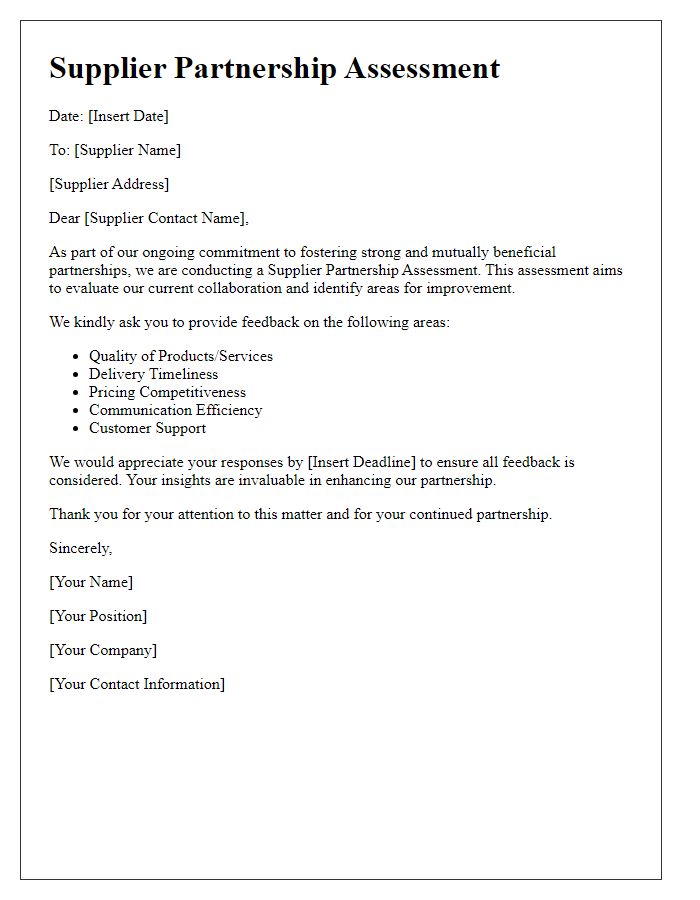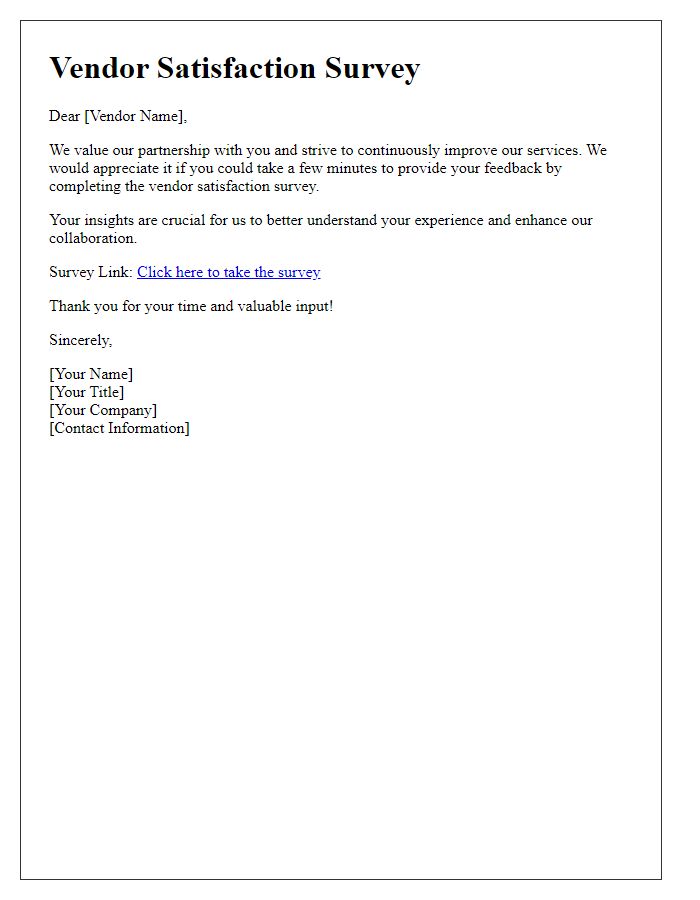Building strong relationships with our vendors is crucial for our mutual success, and conducting a vendor relationship review is a pivotal step in nurturing these connections. By reflecting on our collaborations, we can identify areas of improvement and celebrate the wins that have driven our projects forward. This process not only enhances communication but also aligns our goals for greater synergy. If you're curious about the best practices for conducting an effective vendor relationship review, keep reading to explore our insights!

Introduction and Purpose
In the context of vendor relationship management, the introduction serves a critical role in establishing the purpose of the review. This review focuses on assessing the performance of existing partnerships with suppliers, particularly those providing essential goods and services within the past fiscal year. Evaluations will include criteria such as timely delivery rates, product quality metrics, communication efficiency, and adherence to contractual obligations. This assessment aims to enhance collaboration, mitigate risks associated with supply chain disruptions, and identify opportunities for strategic alignment and cost savings in future transactions. The ultimate goal is to foster stronger partnerships that contribute to overall organizational success and resilience.
Performance Evaluation
Conducting a vendor relationship review is essential for assessing the performance of contractual partnerships in various industries. This assessment focuses on key metrics such as delivery timelines, adherence to quality standards, and responsiveness to communication. For instance, in the manufacturing sector, a vendor's ability to deliver raw materials on time (within the stipulated 30-day lead time) can significantly impact production schedules. A thorough evaluation may also include financial stability checks, examining the vendor's credit rating from agencies like Dun & Bradstreet, and analyzing historical performance data from the last fiscal year. Additionally, gathering feedback from end-users regarding product efficacy and reliability is vital for understanding overall satisfaction. Finally, recommendations for improvement can be formulated based on these insights, ensuring a mutually beneficial relationship moving forward.
Areas of Improvement
In the review of vendor relationships, several areas of improvement emerge that can enhance collaboration and overall performance. Communication practices (frequency, clarity, and responsiveness) need refinement to ensure timely information exchange. Performance metrics (delivery times, quality assessments, and compliance rates) should be regularly evaluated to identify discrepancies and implement corrective actions. Relationship management (contact points, conflict resolution strategies, and engagement activities) requires strengthening to foster a more robust partnership. Additionally, technological integration (software systems, data sharing protocols, and real-time tracking tools) can streamline operations, enhance transparency, and improve overall efficiency. Regular feedback loops (surveys, review meetings, and performance reports) must be established to facilitate ongoing dialogue and address any emerging challenges promptly.
Contractual Obligations
The importance of contractual obligations in vendor relationships cannot be overstated, as they establish the foundational expectations and responsibilities for both parties involved. In a contractual agreement, key elements such as delivery timelines, quality standards, and payment terms must be clearly articulated. For instance, a contract may specify a delivery timeline of 30 days for products sourced from a manufacturer in Shenzhen, China. Adherence to these obligations ensures operational efficiency and fosters trust, which is vital in maintaining long-term partnerships. Additionally, it is essential to regularly review and assess compliance with these contractual obligations to mitigate risks and resolve potential disputes, thus safeguarding the interests of both the vendor and the client.
Future Collaboration Prospects
Effective vendor relationship reviews can illuminate future collaboration prospects. Regular assessments provide insights into vendor performance metrics such as delivery times, quality standards, and compliance rates. For instance, analyzing data from Q1 2023 might reveal that a particular supplier, based in Ohio, improved on-time delivery by 15%, enhancing overall operational efficiency. Feedback mechanisms, including surveys administered to procurement teams, can uncover areas for improvement. Additionally, joint strategic planning sessions can foster innovation by aligning vendor capabilities with organizational goals like reducing costs and enhancing product offerings. By prioritizing mutual growth, both parties can establish stronger commitments, paving the way for long-term partnerships that deliver superior value.













Comments